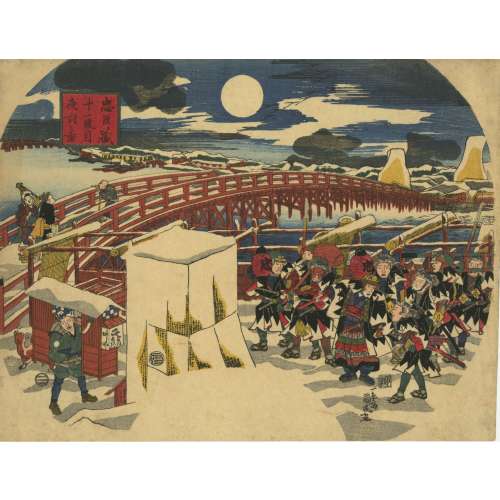


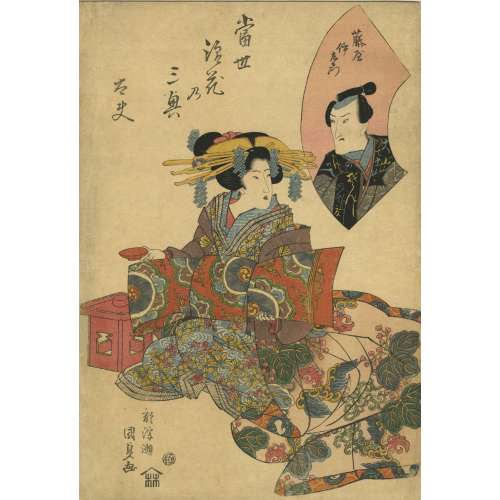



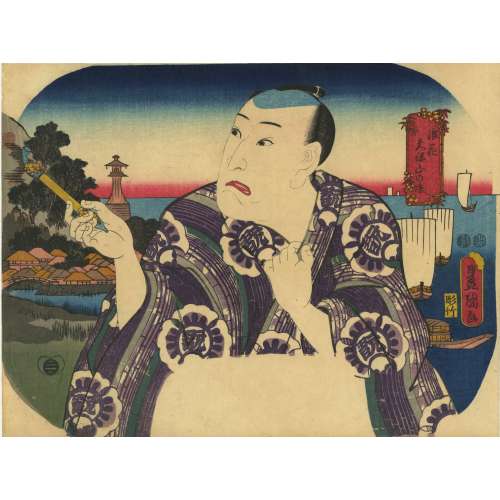
 As noted by Horst Graebner, the gentleman also resembles the character on another Kunisada's actor print, published in 1852 (Waseda University Cultural Resources Database № 114-0232):
As noted by Horst Graebner, the gentleman also resembles the character on another Kunisada's actor print, published in 1852 (Waseda University Cultural Resources Database № 114-0232):
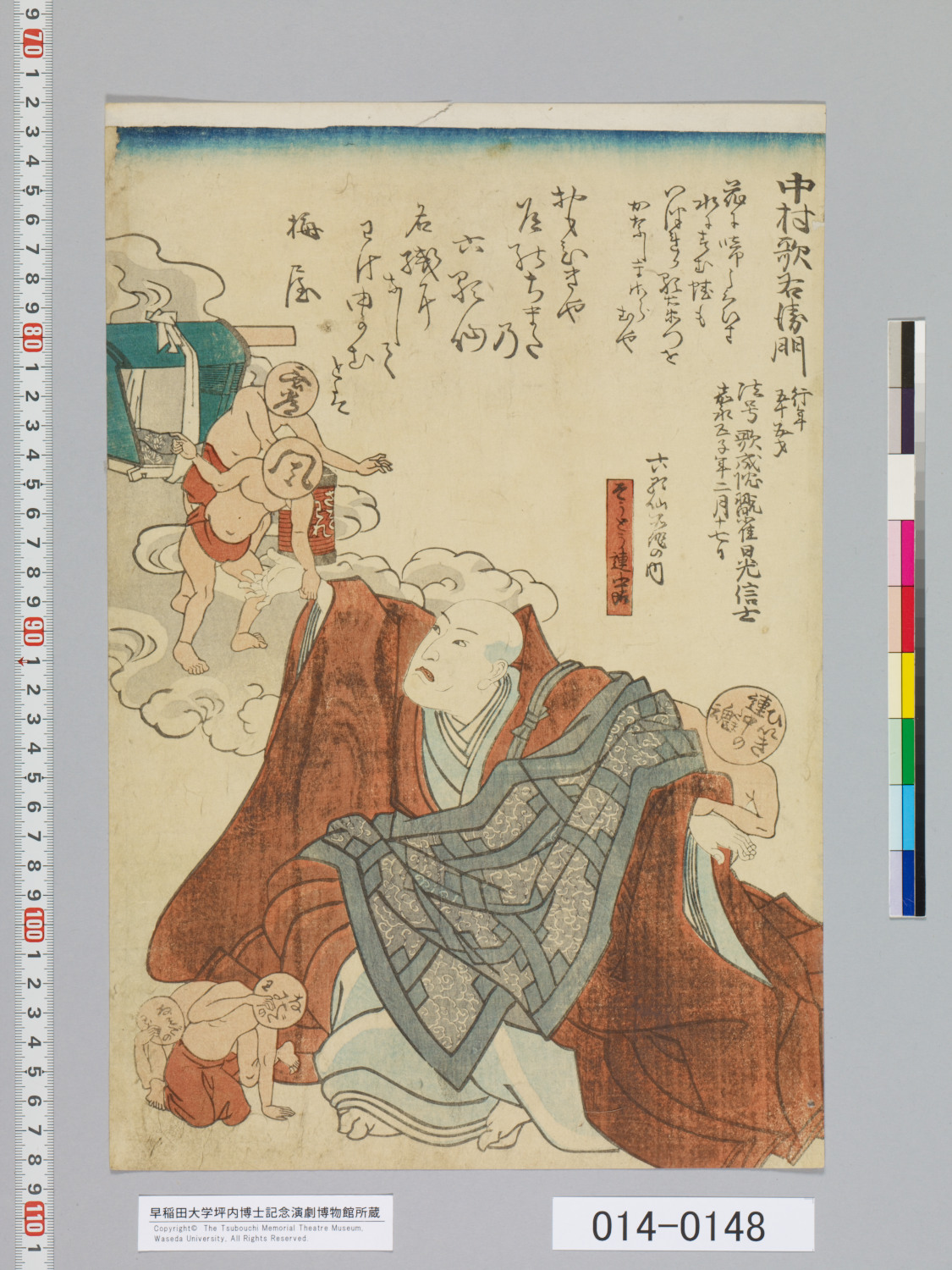
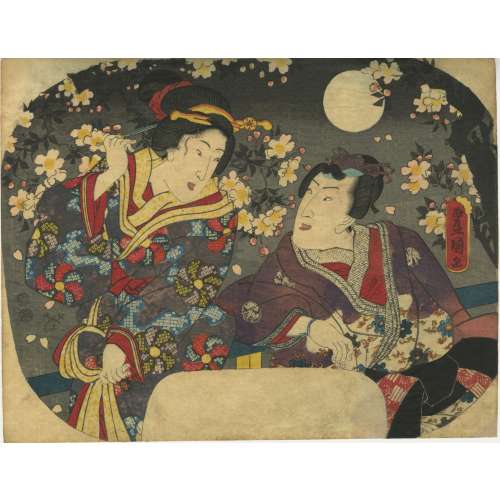
An elegant moonlit conversation unfolds between a man and woman beneath blossoming cherry branches. The full moon and falling petals create a romantic yet fleeting atmosphere, reminiscent of courtly themes in The Tale of Genji (源氏物語).
The woman on the left wears a multi-layered kimono featuring pinwheel floral motifs and geometric patterns in red, blue, and gold. She lifts a hairpin (kanzashi, 簪) to adjust her hair, suggesting modesty, refinement, or quiet engagement in conversation.
The man on the right wears a dark purple haori (羽織, outer robe) adorned with gentian (rindō, 竜胆) mon, a crest associated with nobility and refinement. His red and white obi features Genji-mon, further reinforcing the aesthetic and symbolic ties to Genji Monogatari.
The gentian mon and purple hues evoke Heian-era literary aesthetics, aligning with Genji Monogatari's visual traditions. Though the characters in this fan print are not explicitly named, the composition closely resembles the scene "At moon-viewing night, Genji visits Yūgao," presented below.
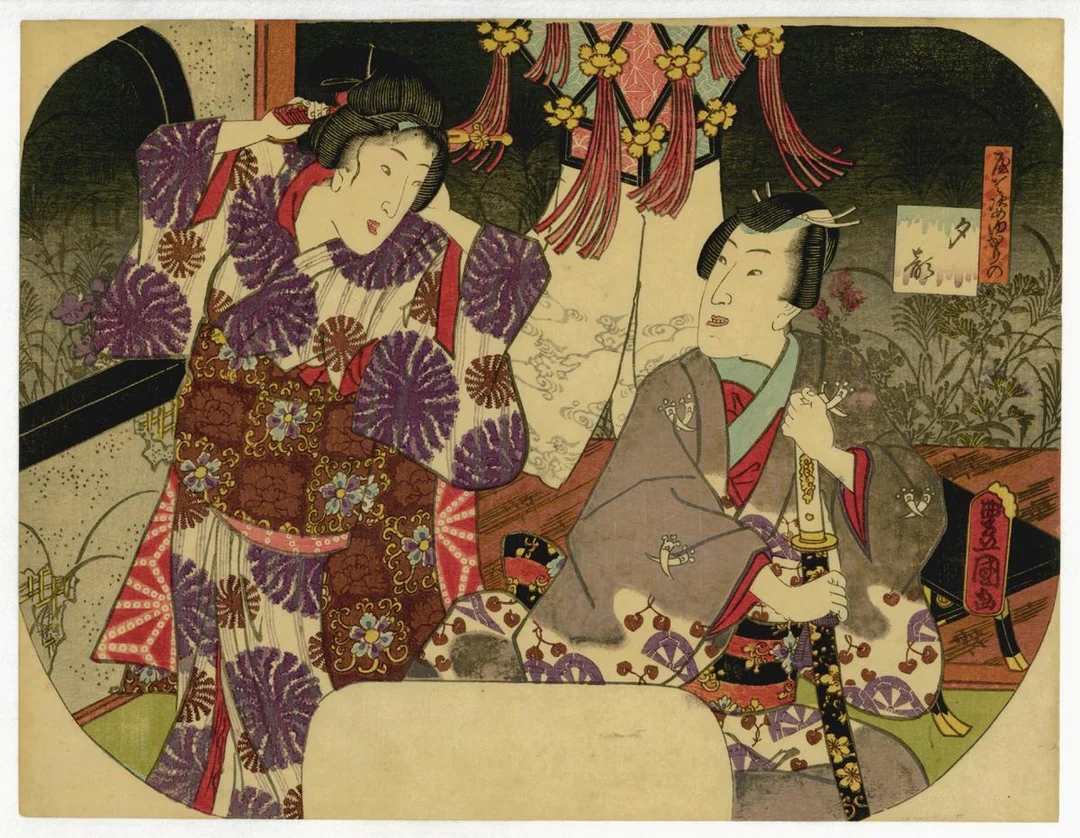
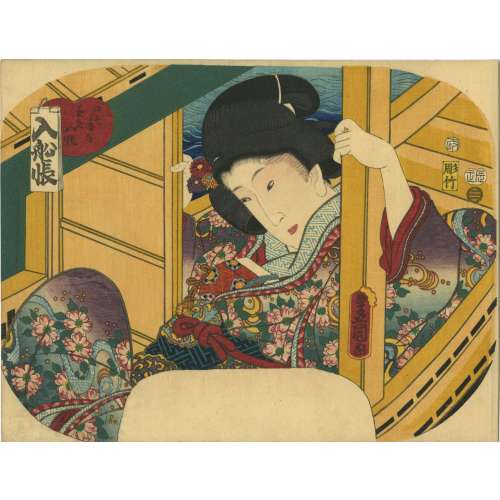
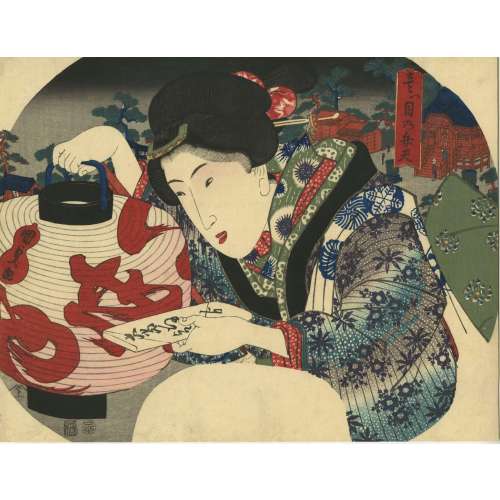
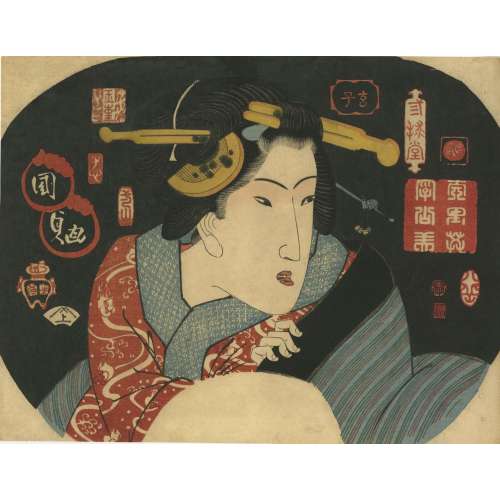
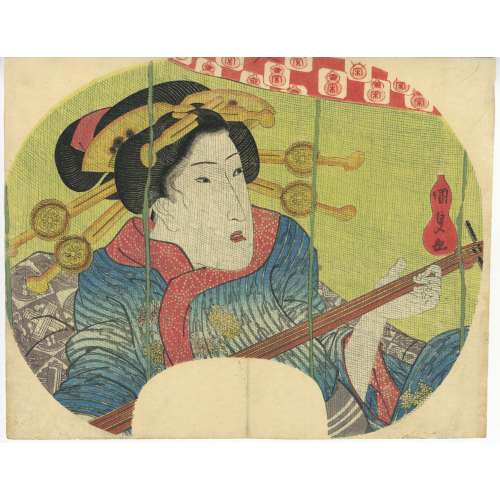
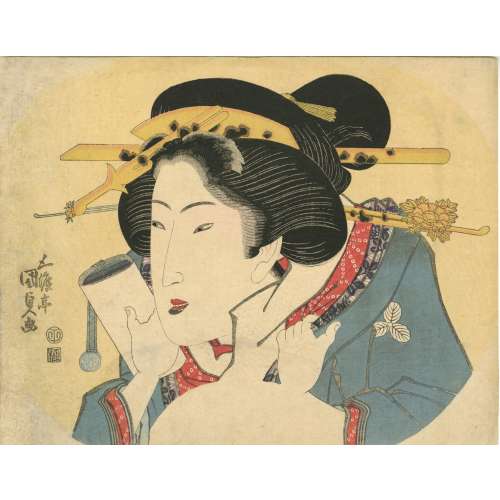
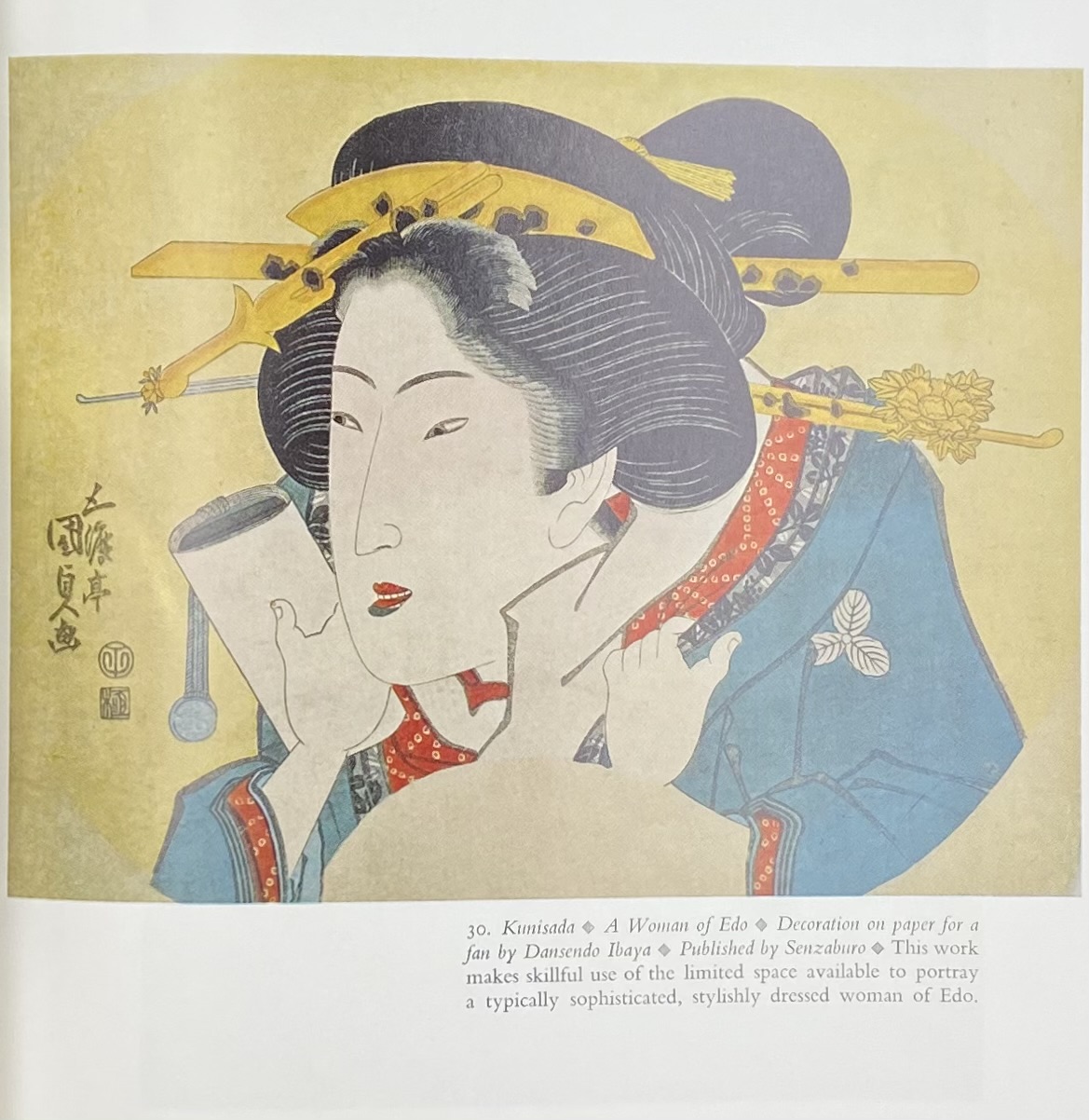
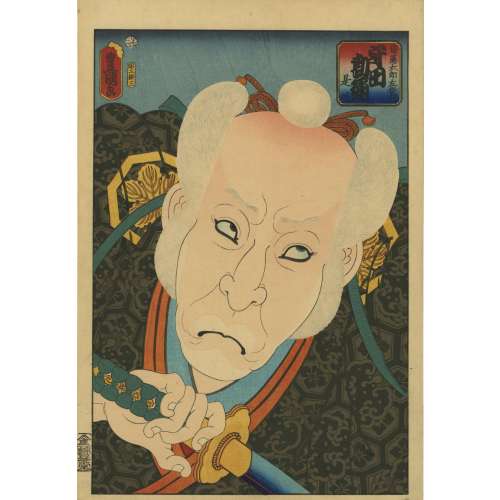
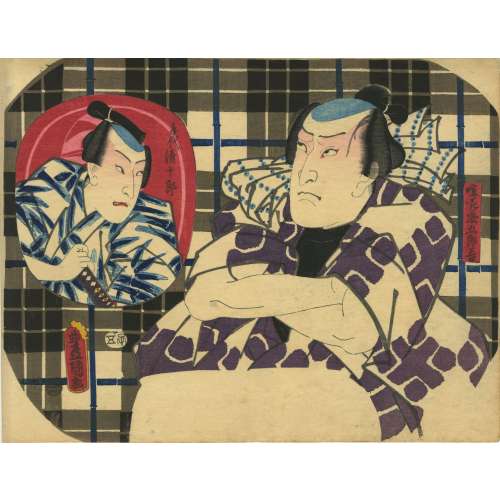
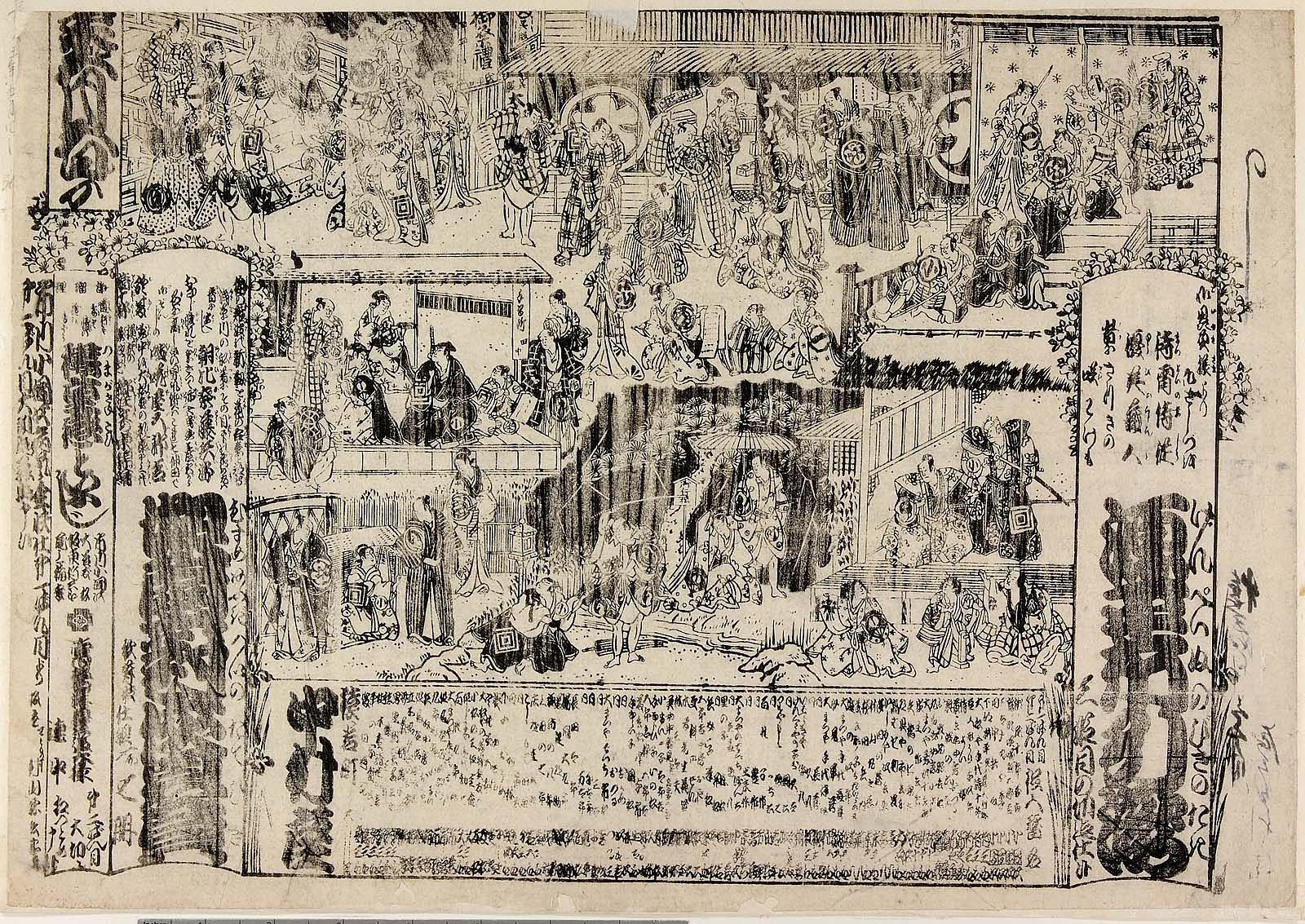 Actors:
Bandō Takesaburō I (初代坂東竹三郎) (Japanese, 1832 – 1877); other names: Shinshi, Shinsui V, Bandō Hikosaburō V [五代目坂東彦三郎], Bandō Tsurunosuke I.
Ichikawa Kodanji IV [市川小團次] (Japanese, 1812 – 1866); other names: Ichikawa Yonejūrō I, Ichikawa Yonezō III, Ichikawa Eizō.
Actors:
Bandō Takesaburō I (初代坂東竹三郎) (Japanese, 1832 – 1877); other names: Shinshi, Shinsui V, Bandō Hikosaburō V [五代目坂東彦三郎], Bandō Tsurunosuke I.
Ichikawa Kodanji IV [市川小團次] (Japanese, 1812 – 1866); other names: Ichikawa Yonejūrō I, Ichikawa Yonezō III, Ichikawa Eizō.
Similar images were then used for the series Seven flourishing plants on lanterns for summer evenings [涼調珍盛の七草] (Suzumi chōchin sakari no nanakusa) published by Ibaya Senzaburō in 1852 (Kaei 5), 6th month.
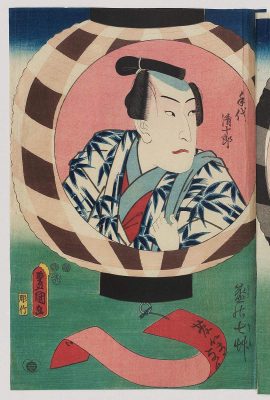
Bandō Takesaburō I (carved by Yokokawa Takejirō): https://collections.mfa.org/objects/219360
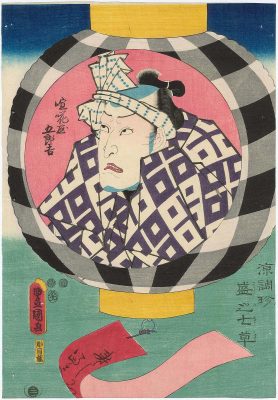
Actor Ichikawa Kodanji IV (carved by Nakamura Tōkichi): https://collections.mfa.org/objects/477146.
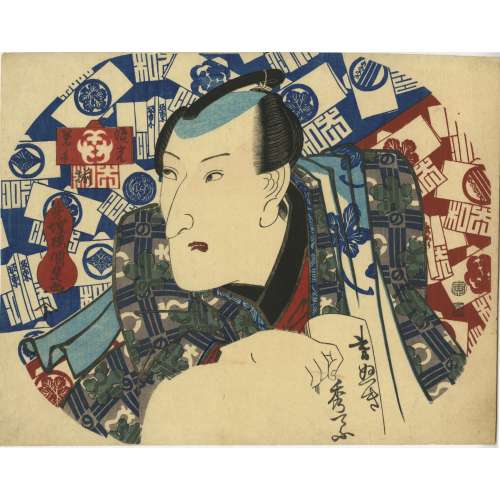
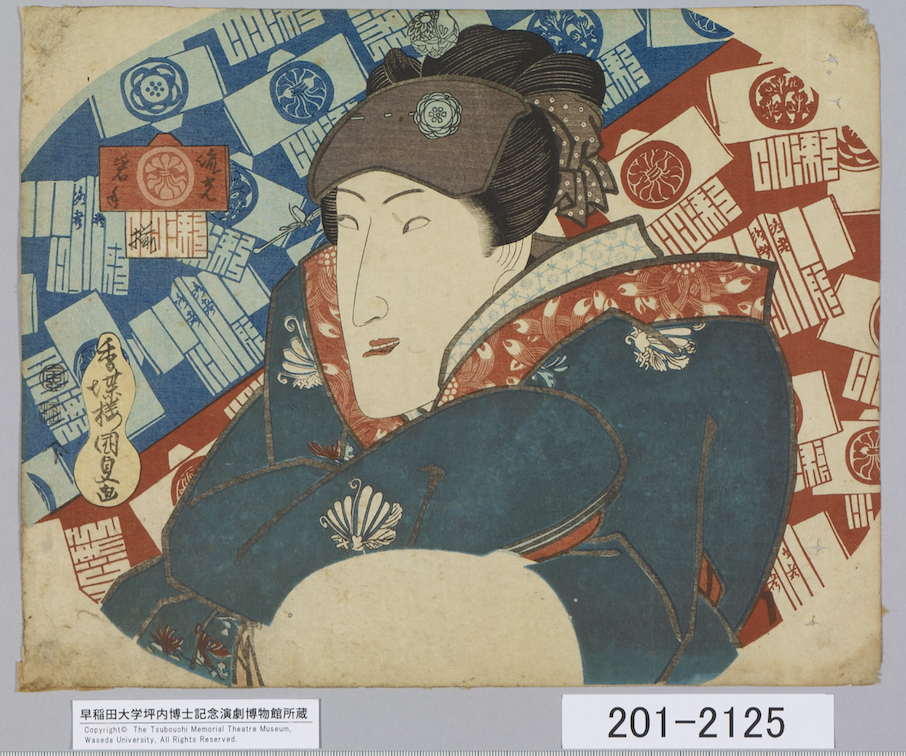
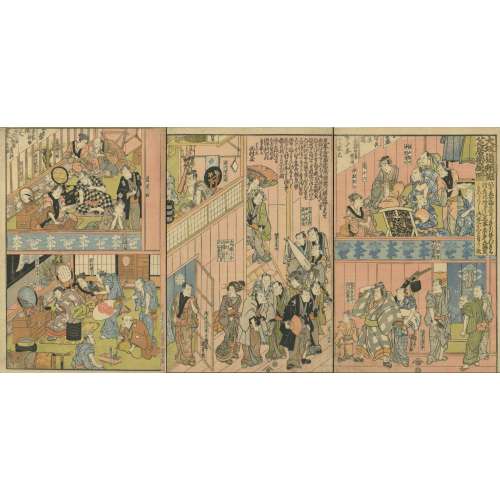
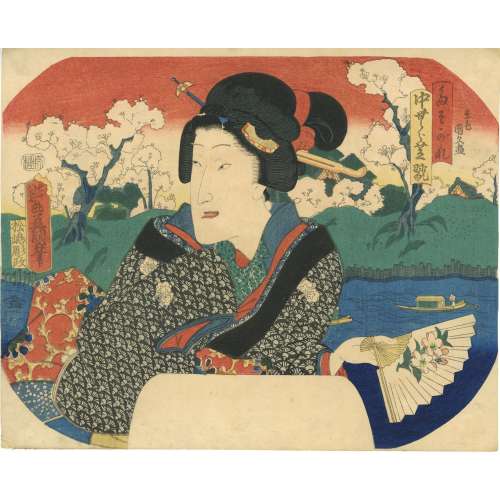
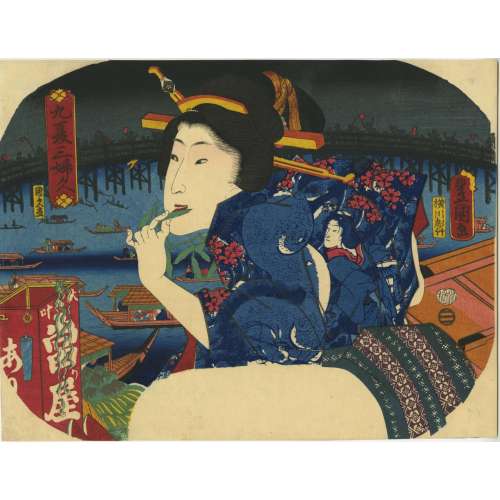
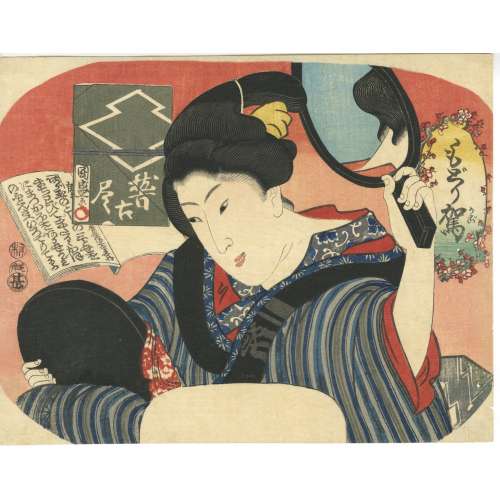
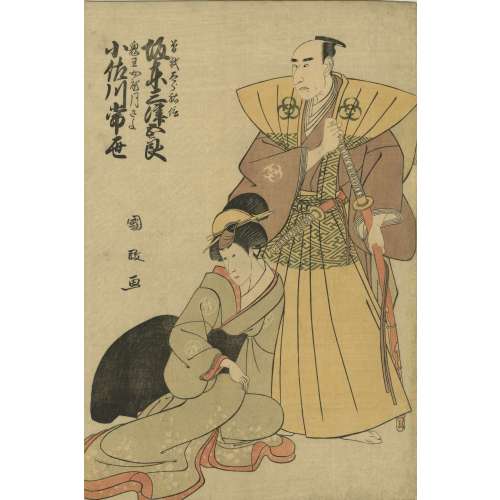
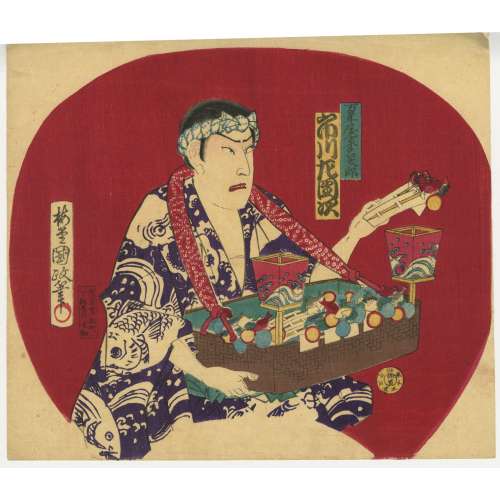
Title: Kabuki Actor Ichikawa Sadanji I as Mannenya Kamei Tarō
Artist: Utagawa Kunisada III (Baido Kunimasa) [Japanese, 1848–1920]
Signature: Baidō Kunimasa hitsu (梅堂國政筆)
Actor: Ichikawa Sadanji I (市川左団次, also known as Ichikawa Shōjaku I, Ichikawa Koyone, Ichikawa Tatsuzō) [Japanese, 1842–1904]
Role: Mannenya Kamei Tarō (万年屋家名太郎)
Play: Unidentified
Publisher: Shimōsaya Masukichi (下総屋升吉)
Publisher’s Address: Asakusa, Kurofune-chō (浅草 黒舩)
Date: [明治十三年三月] Meiji 13 (1880), 3rd month
Medium: Uchiwa-e (団扇絵, fan print), ink and colour on paper, 245 × 282 mm
This uchiwa-e (fan print) by Utagawa Kunisada III (also known as Utagawa Kunimasa IV) portrays the kabuki actor Ichikawa Sadanji I in the role of Mannenya Kamei Tarō. The figure is depicted in a dramatic stance, dressed in a striking blue kimono adorned with fish and wave motifs, suggesting a maritime or festival connection. He carries a large basket supported by a fabric strap around his neck, filled with small toy fish attached to sticks, along with round objects that could be festival sweets or miniature decorations. He holds one of these toy fish-on-a-stick items in his right hand, possibly demonstrating it as part of a vendor's performance.
The background is a bold, deep red, contrasting with the detailed rendering of the actor’s expression and costume. The print was published in 1897 (Meiji 30) by Shimōsaya Masukichi, a publisher based in Asakusa, Kurofune-chō. Though the exact play remains unidentified, the composition captures a moment from a kabuki performance where street vendors and festival sellers were often featured as comic or supporting characters in Edo-period narratives.
This work exemplifies the continuation of traditional kabuki actor portraiture into the Meiji period, reflecting both theatrical culture and popular printmaking traditions at the time.
